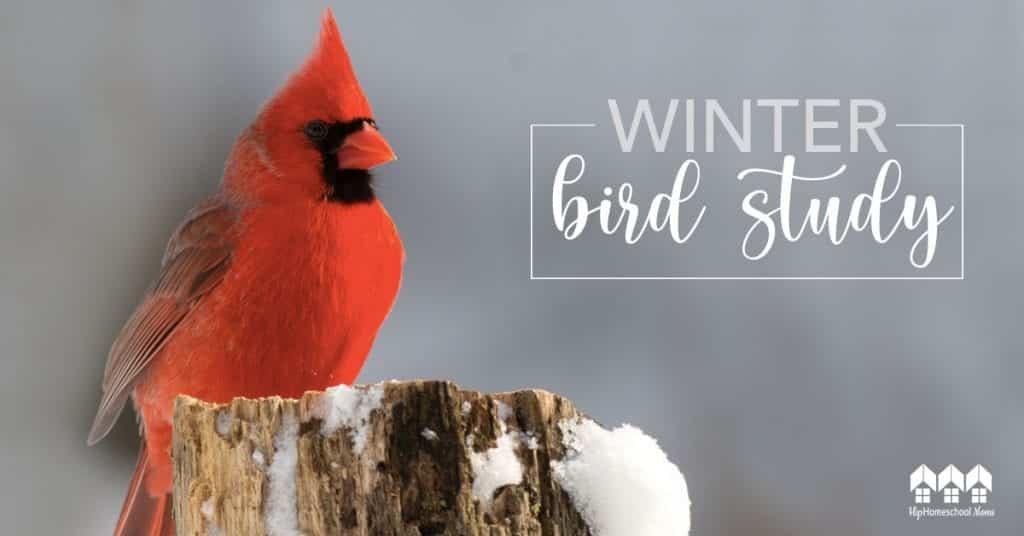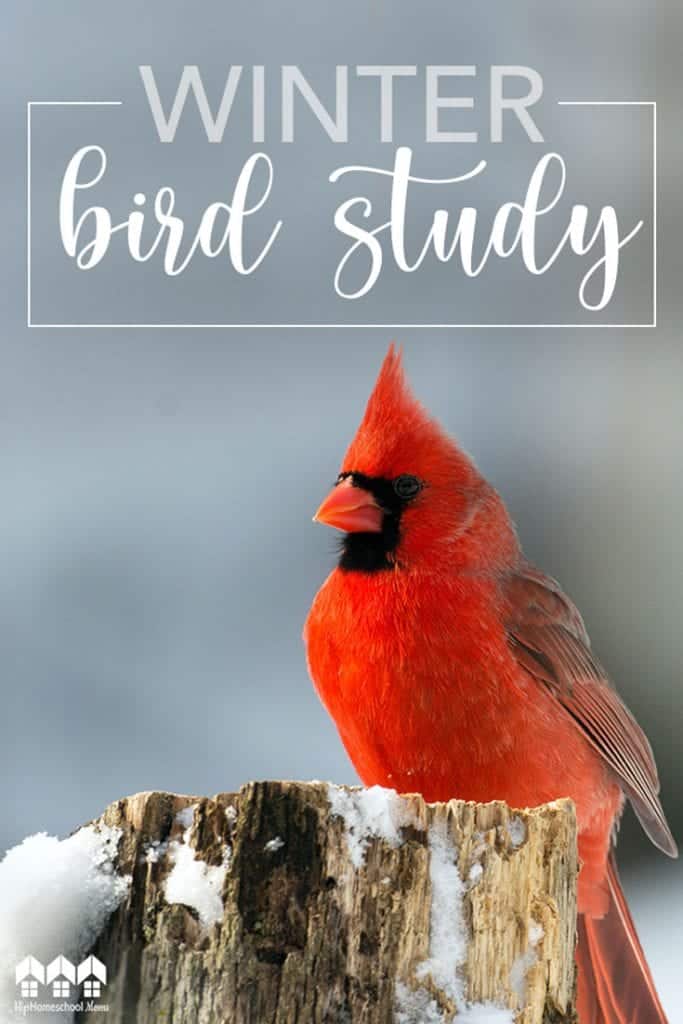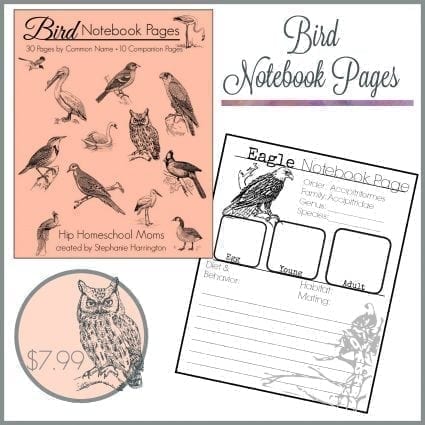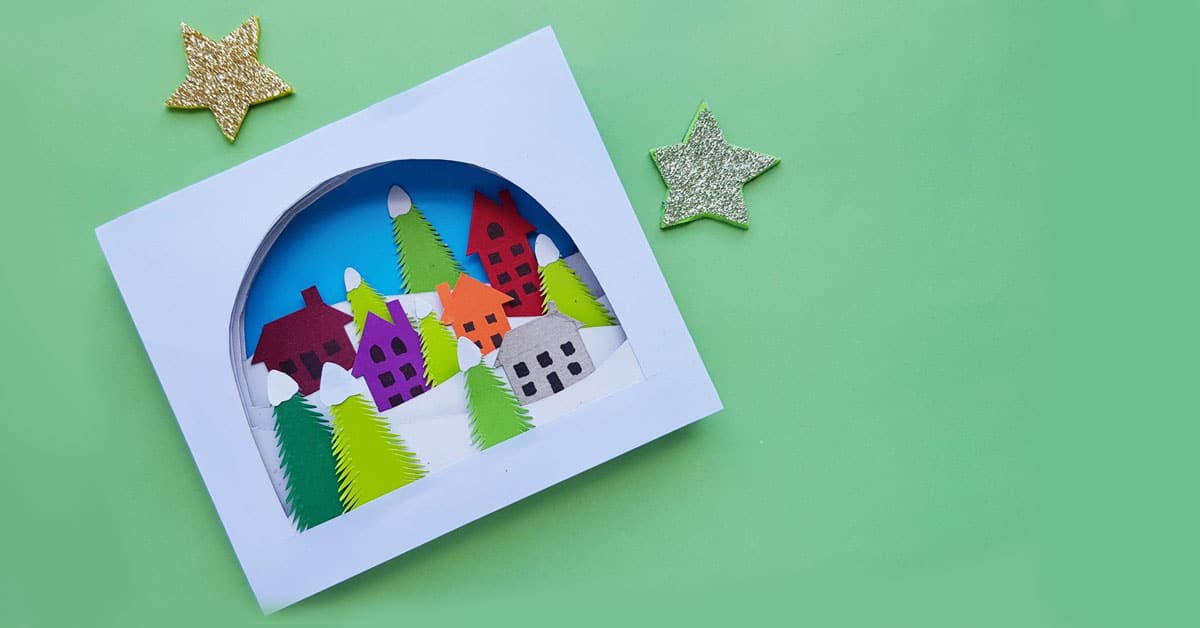Winter Bird Study
Winter is a great time to do a nature study! You may think it’s too cold to be outside, but don’t let the cold temperatures deter you. We’ve had some pretty astonishingly lovely winter days here lately. So pick a nice day to get out and walk around the park or go for a nature hike and take advantage of the opportunity to do a winter bird study!

Reasons to Do a Winter Bird Study
1. You can easily attract birds during the winter because they’ll be looking for good food sources. Not all birds migrate in the winter. Food supplies are often low during winter, so feeding the birds around your home is an ideal way to study any bird that is common to your area. You’ll find out what certain birds eat just by observing what they are attracted to.

2. You can focus on one bird that is common to your area in the winter. Children (and adults) learn about more than just birds while watching over a period of time. That’s the neat thing about nature study! It brings us closer to our Creator and slows us down a bit. With regular observation, you may find that your child learns more than just what a bird eats and what color its eggs are. He or she will learn about its behavior too. Nature speaks volumes to all of us, young or old.
3. You can do a winter bird study indoors too! I know part of the point of of nature study is to get out into your environment. But some days it really is too cold. It’s great that with birds, you can view them from your window if you place your feeders strategically. You could also consider the zoo. Why not take a field trip? They often have indoor aviaries if they are open year round, and this way you can expand your bird study to birds all over the world.
Considering using Notebook Pages to enhance your study!
You can use a nature journal to record your findings or use these Bird Notebook Pages and insert them into a 3 ring binder. The packet covers many birds, so you can add them as you go. There are also pages for adding your own birds if the ones you need aren’t included.
Feeding Winter Birds
Another way to attract birds and learn more about what they eat is by doing some research and feeding them! There are lots of sites you can visit to learn more about how and what to feed winter birds. Here are a couple. Take a look at Bird Watcher’s Digest to find out the Top 10 Foods for Winter Bird Feeding. And you’ll find some fun and easy ideas for Homemade Bird Feeders to Make with Kids This Winter on Happy Hooligans! Whether you want to keep it simple and throw out some peanuts or sunflower seeds or whether you want to make some fun bird feeders with your kiddos, you’ll find ideas and information to do whatever fits your family!
Want to participate in an official bird count?
Consider Project FeederWatch!
What is it?
If you want to participate in an official bird watch, try Project FeederWatch! It’s a winter-long (November – April) survey of birds that visit homes, nature centers, parks, and other locations all across North America. You can participate for as few as two days, so it doesn’t have to be a long-term commitment. (You can sign up to participate through early April, so it’s not too late to join in the fun!)
When is it?
The project always starts on the second Saturday of November and continues for 21 weeks.
What do you do?
You count birds as often as each week or as infrequently as you like. You’ll need to install a bird feeder in an area where it’s easy to see and count the birds. Then you’ll choose two consecutive days to count birds. (You can count birds on two consecutive days just once, or you may count birds for two consecutive days each week. It’s up to you!) Then, on your chosen days, you’ll count birds as much or as little as you want and record the maximum number of species visible at any one time during your two-day count. (There are more detailed instructions on the FeederWatch site. This is just to give you a basic understanding of the requirements so you can consider whether you’d like to look into it further.)
How much does it cost?
The cost to participate is $18 for residents of the United States. This covers materials, staff support, web design, data analysis, and the year-end report.
Where can I get more information about Project FeederWatch?
To get all the details, just click this link! You’ll go to the Project FeederWatch website where you can learn more about the requirements to participate, get detailed instructions, learn more about identifying birds, find educational and homeschool resources, and find out how to order your own (physical) instructional kit and download instructions so you can begin counting birds right away!
Bird cams are another great way to observe birds in different areas of the country.
Another fun way to enhance and expand your bird study is by watching bird cams! There are bird cams available for watching all kinds of birds in different areas of the country and the world! Just google “bird cams” and see what you can find! Or, if you’re looking for a particular kind of bird to watch, google “Panama Fruit Feeder bird cam” or whatever other kind of bird you’re looking for. Of course we recommend that a parent do the searching and that you only allow your children to take a look after you’ve double checked that the site is legitimate and safe!
Or you can go to The Cornell Lab All About Birds site to see what bird cams you can find there! Not only can you find current bird cams, but you can also find video highlights from bird cams from previous years. At this very moment, I’m watching (live!) a Northern Royal Albatross in New Zealand as she sits on her nest. The poor thing is enduring some strong winds, but she doesn’t seem to mind at all! And the scenery where she’s incubating is gorgeous!
Birds to Consider for Winter Study:
- cardinal
- blue jay
- penguin- I put together a great resource here for a penguin study with or without the book Mr. Popper’s Penguins.
- owl
- black capped chickadee- This post includes amazing art work from my son’s 12th grade Natural History course and a few facts about this bird.
- tundra swans
- seabirds- This was a fun unit we did with the book Seabird
. Any seabird is easy to study in the winter. If you are on the coast, this may be great for you! And if your not a book like Seabird is perfect to guide your study. Plus the book contains some icy chapters.
If you have a textbook or living book that has a lessons on birds, you might want to focus on it in the winter. That’s what we did last year for our homeschool co-op in which we used Apologia’s Flying Creatures of the Fifth Day. We covered the chapters on birds throughout the winter and insects in the fall and spring. That way we could observe insects in action while they were available outdoors.










